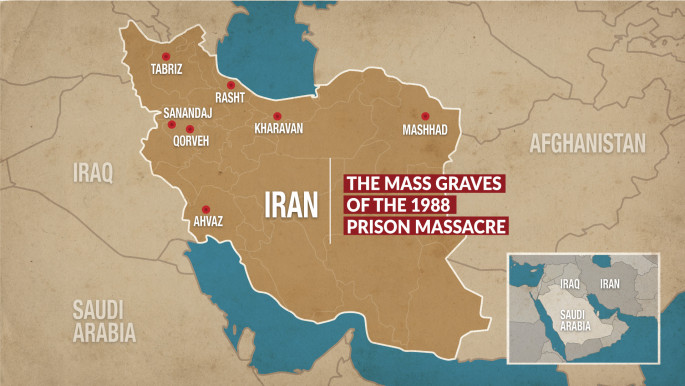The 1988 Iran prison massacre: What happened?
The Amnesty International and Justice for Iran report reveals the likely whereabouts of the missing, with satellite images showing likely mass graves scattered across the country.
For their loved ones, it will not replace their lost relatives or confirm their whereabouts, but it provides one hint at their fate after they disappeared in jails three decades ago.
For Iran's government, the revelations will be highly embarrassing for a regime that has staked its legitimacy on being moral and just.
What happened?
In the years that following the Islamic Revolution of 1979 and a theocratic regime was established in Tehran, with thousands of Iranians thrown into jails and tortured for their political beliefs.
In 1988 - as the Iran-Iraq War was beginning to wind down - around 5,000 political prisoners were put to death - some hanged and many shot dead.
The killings allegedly took place after a fatwa from Supreme Leader Ruhollah Ayatollah Khomeini ordering the killings of the leftists - many of whom were considered disbelievers or heretics.
The victims were hauled in front of so-called Revolutionary Courts and then put to death, en-masse.
 |
| Click here to enlarge |
Who was killed?
Many of the detainees were communists, socialists, democrats, Islamist opposition, activists, and religious or ethnic minorities.
Many of the victims were the Mujahidin-e Khalq (People's Mujahedin of Iran) - a highly secretive organisation that fell out with the theocratic government in Tehran shortly after the Islamic Revolution.
The group had sided with Saddam Hussein during the Iran-Iraq war, and the group remains a key enemy of the Iranian regime.
How many died?
Human rights groups estimate a minimum or 4,000 to 5,000 died in the purges, but Mujahidin-e Khalq have put the number as high as 30,000.
Where are they buried?
Victims were buried in mass graves across Iran, Amnesty International said, including Mashhad, Vadieh Rahmat cemetery in Tabriz, the Bahai cemetery in Qorveh, Kurdistan province, and in the grounds of a former Revolutionary Court in Sanandaj, Kurdistan province.
The sites have since being demolished or covered over. Amnesty's report stated that some of the burial sites are hidden beneath new graveyards or constructions, while others have been turned into dumping grounds.
Who is responsible?
Many of the families say they have been told unofficially that the regime carried out the massacres.
Iranian activists have pointed to an audio recording of Khomeini's heir apparent Ayatollah Hossein Ali Montazeri, who appeared to admit to the killings.
What next?
Amnesty International and Justice for Iran are calling for an immediate end to the destruction of the burial grounds.
They also want Tehran to acknowledge that these sites are crime scenes that need to be preserved.
Campaigners are also calling for an end to state-sanctioned harrassment of the victims' families as they pursue their quest for justice. They also want see those responsible to be brought to justice.





 Follow the Middle East's top stories in English at The New Arab on Google News
Follow the Middle East's top stories in English at The New Arab on Google News


